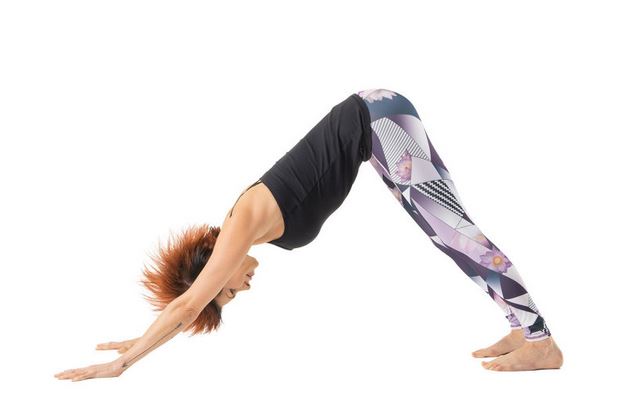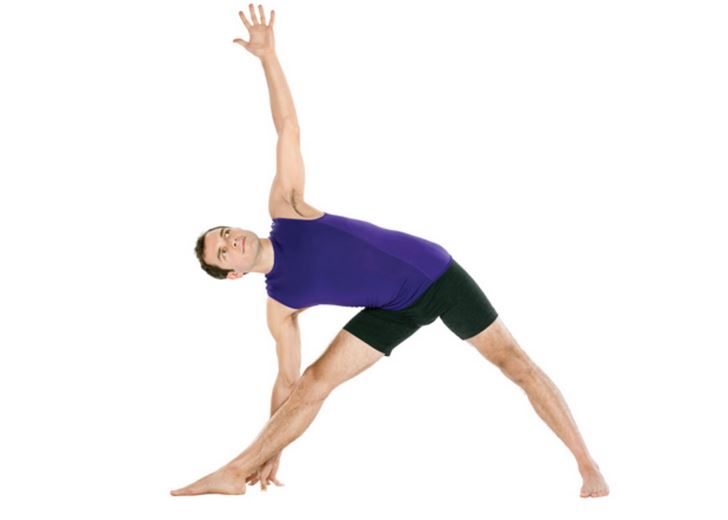Stretching is an important foundation for bouldering or any other physical activity. Bouldering requires the limbs and joints to be bent and stretched constantly as you work through the route.
It takes only a few minutes to stretch and with consistency, the results of stretching can become apparent quickly.
These are three stretches that will help improve and recover your muscles for bouldering.
Why Stretching for Bouldering is Important
Climbers want to be able to have mobility and strength to be successful. Along with fine technique to navigate a climbing route, muscle power is crucial as well. This places a lot of stress on the various arm and leg muscles used.
Stretching can increase your range of motion in your arms and legs. It conditions the muscles and tendons to withstand force and stress applied. Post-exercise stretching can even aid in workout recovery.
Seated Shoulder Stretch
This variation of the shoulder stretch helps to open the shoulders.

How to do it
Sit cross-legged in a comfortable position. Join your hands together behind your back with your palms up. Your intertwining hands should be next to your tailbone. With your back fully straight, bend forward so your chest is on top of your legs. At the same time, lift your arms upward.
Stretched Muscles:
- Trapezius (Neck)
- Deltoids (Shoulders)
- Triceps (Back Upper Arm)
Why is it important for bouldering?
Stiff shoulder joints will do you no good in bouldering. You want your shoulders to be able to handle a full range of motion to help improve your technique and success in climbing.
This stretch works to increase the mobility of the shoulders which is important when reaching for holds in any direction. It also helps prevents the shoulders from becoming stiff and sore afterward.
Downward Facing Dog
This is a classic yoga stretch that can overall strengthen and stretch your shoulders, back, and legs.

How to do it
Start on your hands and knees, with your wrists directly below your shoulders and knees below your hips. Spread your fingers apart and balance your weight evenly through your hands. Lift your knees off the floor and slowly straighten your legs. Do not lock your knees. Lift your elbows from the floor and slowly straighten them. Relax your shoulder blades. Your body should look like an upside-down V. If you can, lower your heels to the ground. While holding this stretch, you can alternate bending and straightening one leg at a time.
Stretched Muscles:
- Deltoids (Shoulder)
- Latissimus Dorsi (Back)
- Hamstrings (Upper Back Leg)
- Gluteus Maximus (Butt)
- Gastrocnemius (Calf)
- Quadriceps (Upper Front Leg)
Why is it important for bouldering?
Leg muscles are often overlooked in bouldering, with the majority of people assuming that climbing only requires arm strength.
Stretching key muscles like the hamstrings and the calves will greatly improve endurance on more difficult climbs. It can also prevent stiffness and injury to the shoulders and back.
Triangle Pose
This is another well-known yoga stretch that opens the hips and side body.

How to do it
From a standing position, move one foot forward about 4 feet and point it straight in front of you. Rotate the other foot to point horizontally outward. Lift your arms up to a T, with one arm in front and the other arm behind, and keep your palms facing down. Reach the front arm forward and then down to your foot. The arm behind should be straight and reaching up to the sky. Turn your neck to face upward. This should twist your torso and stretch the side of your body. Do this stretch for the other side.
Stretched Muscles:
- Triceps (Upper Back Arm)
- Obliques (Side Abdominals)
- Gluteus Medius (Butt)
- Sartorius (Hips)
Why is it important for bouldering?
For many beginner climbers, it is tempting to climb with all your limbs close to your body, as if you were on a ladder. This leads to cramps, muscle soreness and exhaustion before you finish the route.
Loosening up and practicing this stretch can help you learn to open your body more when you climb.
It allows you to reach further to grab more difficult holds, as well as shifting your bodyweight to take the stress off of your limbs.
Summary
Bouldering can place a lot more stress on your body then you think. It’s a sport that utilizes not only the arms, but the whole body.
Stretching consistently before and after workouts can help increase the flexibility of all the muscles you need for climbing.
Whether you are a beginner or expert at bouldering, stretching is crucial to minimizing soreness and injury, as well as giving you the extra bit of reach and strength in a climb.

